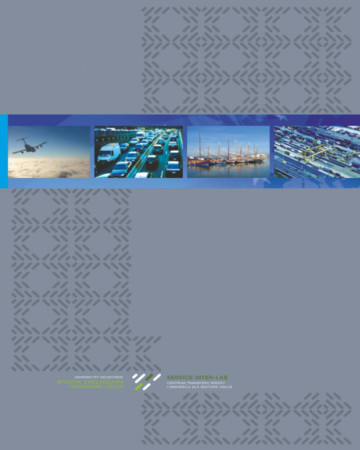
ISSN: 1644-275X
eISSN: 2353-3005
OAI
DOI: 10.18276/ptl.2017.38-04


Issue archive /
nr 2 (38) 2017
Rola transportu morsko–rzecznego w europejskim systemie transportowym
(Role of Sea-River Transport in the European Transport System)
| Authors: |
Emilia
Kuciaba
Uniwersytet Szczeciński |
| Keywords: | short sea shipping inland navigation river-sea transport. |
| Data publikacji całości: | 2017 |
| Page range: | 8 (39-46) |
Abstract
Sea-river transport in Europe is a complex segment of the transport services market. It mainly implements homogeneous transport needs, which makes business fluctuations and structural changes in industry have a particularly strong impact on its activity. Sea-river transport develops in countries where there are very good natural conditions for shipping, mainly in the deltas of the largest European rivers. Improving the parameters of inland waterway transport infrastructure creates possibilities for the development of sea-river transport, increasing the potential for developing inland ports and enabling the handling of new cargo and transport relations.
Download file
Article file
Bibliography
| 1. | Biała Księga. Plan utworzenia jednolitego europejskiego obszaru transportu – dążenie do osiągnięcia konkurencyjnego i zasobooszczędnego systemu transportu (2011). TRANS 102, Rada UE, Bruksela, 29 marca. |
| 2. | Biuro Promocji Żeglugi Morskiej Bliskiego Zasięgu. Pobrane z: http://shortsea.pl/ (3.02.2017). |
| 3. | Communication from the Commission to the Council, the European Parliament, the Economic and Social Committee and the Committee of the Regions – The Development of Short Sea Shipping in Europe: A Dynamic Alternative in a Sus¬tainable Transport Chain – Second two-yearly progress report COM/99/0317 final. Brussels. |
| 4. | Europäische Binnenschifffahrt (2013). Marktbeobachtung, nr 17, Zentralkommision für die Rheinschifffahrt. |
| 5. | Europäische Binnenschifffahrt (2014). Marktbeobachtung, nr 18, Zentralkommision für die Rheinschifffahrt. |
| 6. | Keep Europe Moving – Sustainable Mobility for Our Continent Brussels, COM(2006) 314 final. |
| 7. | Komunikat Komisji do Rady, Parlamentu Europejskiego, Europejskiego Komitetu Ekonomiczno-Społecznego oraz Komitetu Regionów, Śródokresowy przegląd Programu promocji żeglugi bliskiego zasięgu, COM(2003) 155 wersja ostateczna, Bruksela. |
| 8. | Komunikat w sprawie żeglugi morskiej bliskiego zasięgu, Bruksela, COM(2004) 453 wersja ostateczna. |
| 9. | Logistyka transportu towarowego w Europie – klucz do zrównoważonej mobilności, Bruksela, COM(2006) 336 wersja ostateczna. |
| 10. | Medium and Long Term Perspectives of IWT in the European Union (2011). Final Report, NEA, CE Deft, Planco, MDS Transmodal, Zoetermeer: Viadonau. |
| 11. | Program promocji żeglugi bliskiego zasięgu, Bruksela, COM(2003) 155 wersja ostateczna. |
| 12. | Rozwój żeglugi bliskiego zasięgu w Europie: Dynamiczna alternatywa w łańcuchu zrównoważonego transportu – Drugie dwuletnie sprawozdanie z postępu prac, Bruksela, COM(1999) 317 wersja ostateczna. |
| 13. | Sander, K. (2013). Short Sea Shipping als Lösung. Internationales Verkehrswesen, 3, 20–21. |
| 14. | The Development of Short Sea Shipping in Europe: A Dynamic Alternative in a Sustainable Transport Chain, COM (1999) 317 final. |
| 15. | UK Department of Transport (2012). Domestic Waterborne Freight – Statistical Release. London, December |
| 16. | Weintrit, A. (red.) (2010). Nawigacyjno-hydrograficzne aspekty żeglugi morsko-rzecznej w Polsce. Gdynia: Wydawnictwo Akademii Morskiej w Gdyni. |
| 17. | Wojewódzka-Król, K., Rolbiecki, R. (2014). Transport wodny śródlądowy. Funkcjonowanie i rozwój. Gdańsk: Wydawnictwo Uniwersytetu Gdańskiego. |
| 18. | Wronka, J. (2000). Żegluga morska bliskiego zasięgu w Europie. Problemy Ekonomiki Transportu, 1, 41–58. |